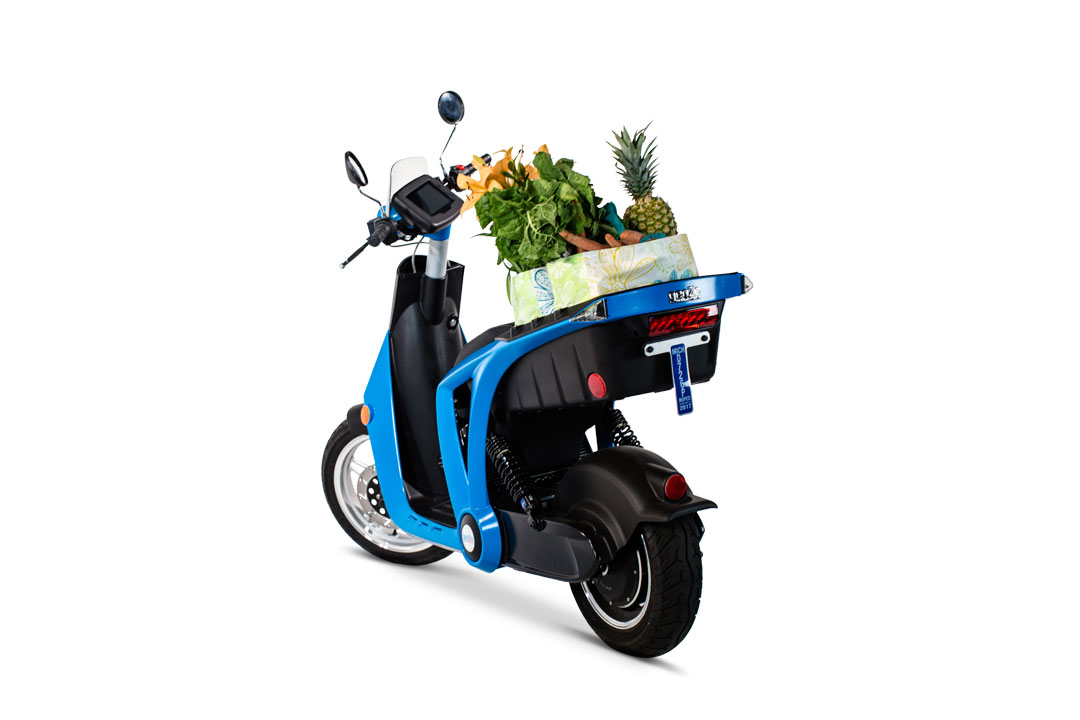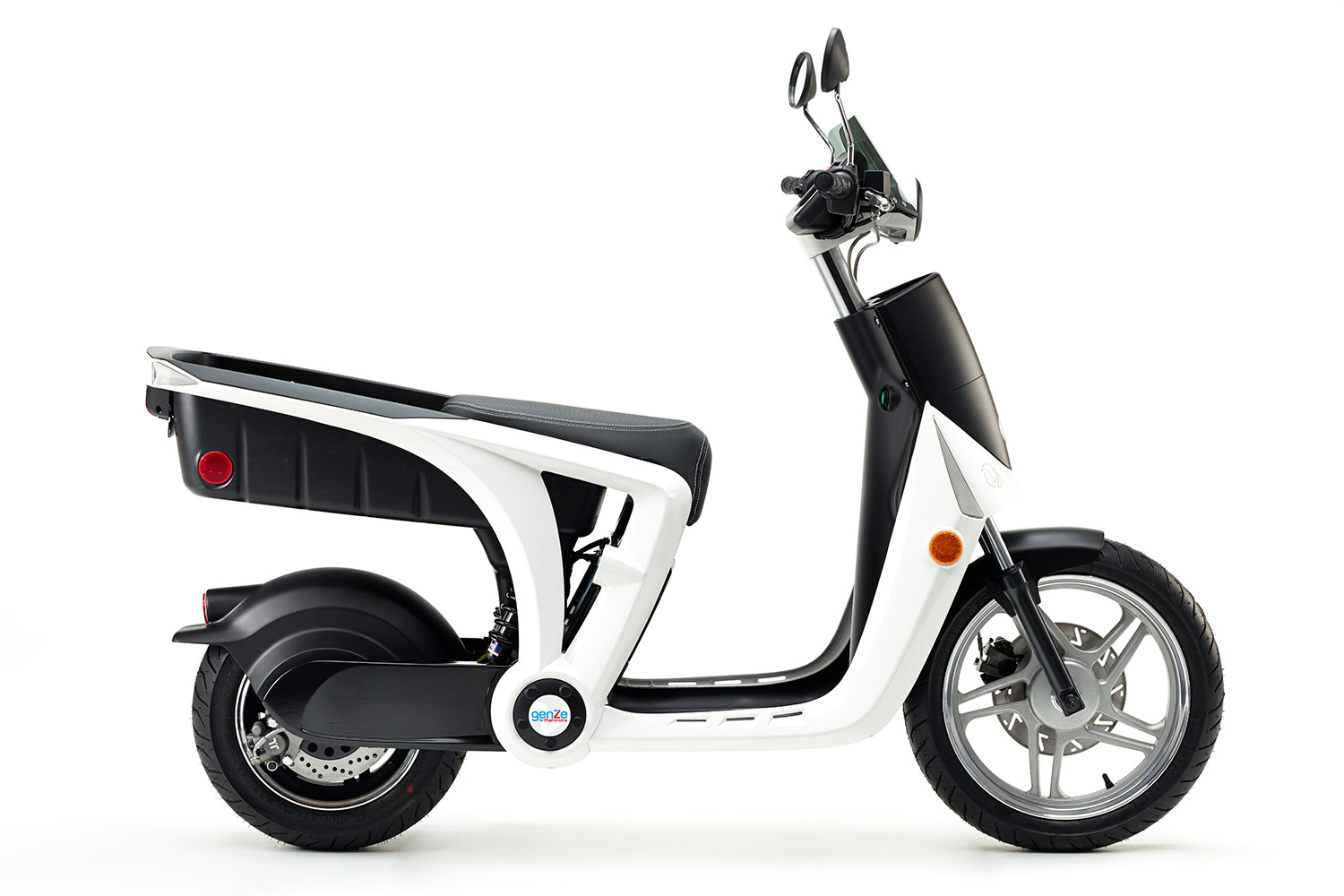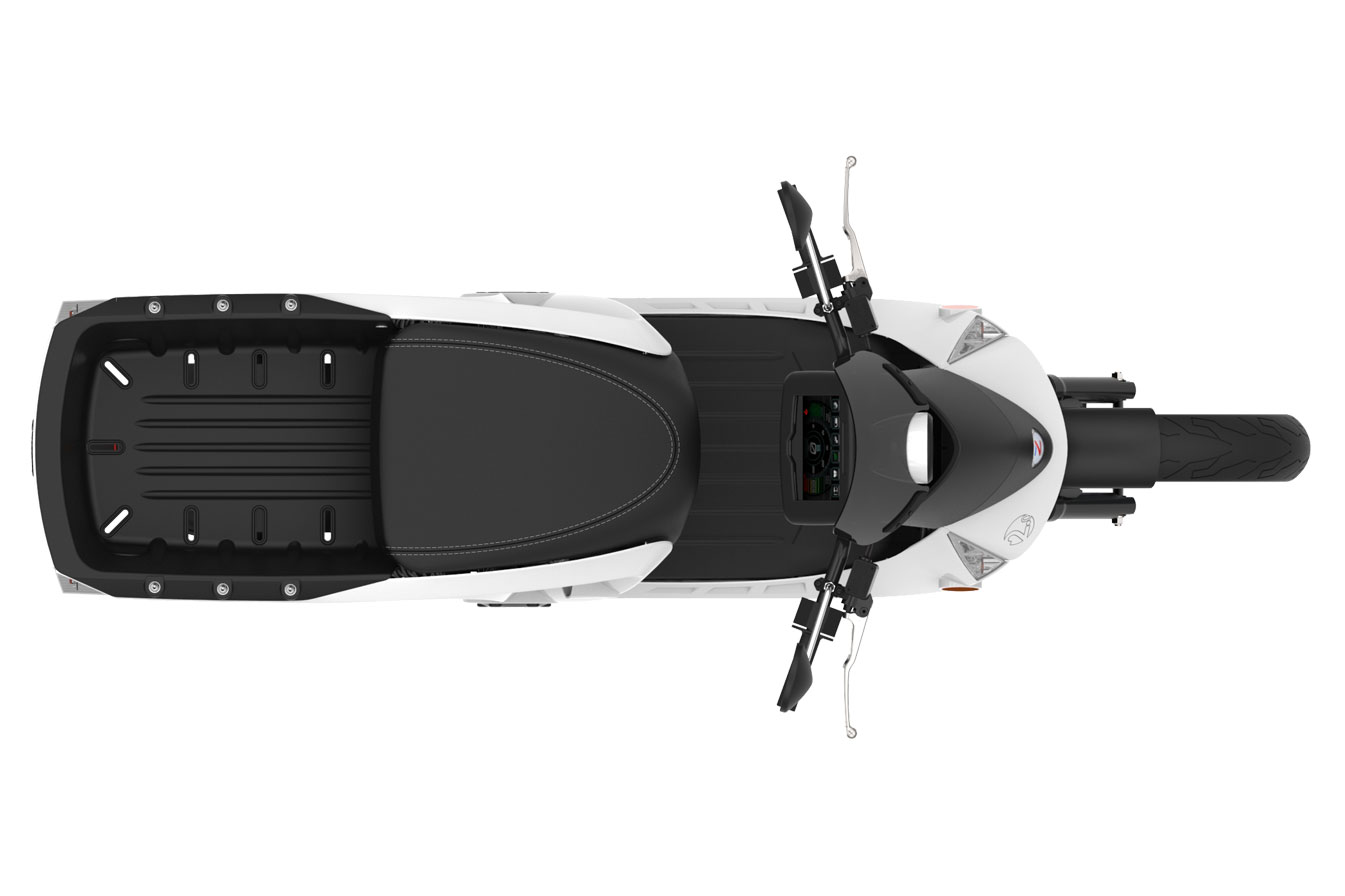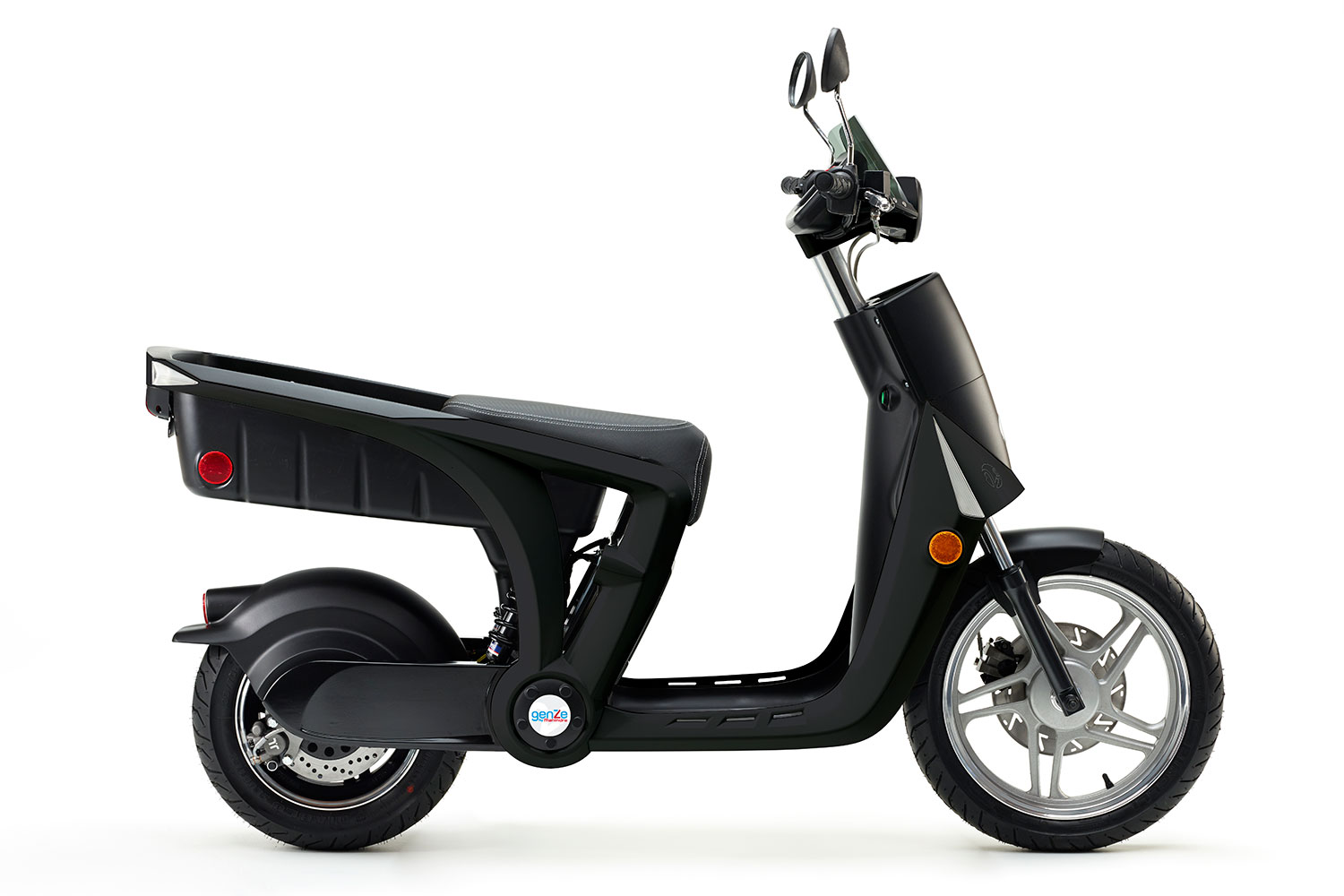Motorized scooters may be one of the most popular ways to get around in Europe and Asia (sales of scooters jumped 12 percent globally in 2011, in fact), but the compact two-wheelers haven’t quite caught on in the United States. Despite the many benefits of mopeds — cheaper fuel, a reduced environmental impact, and the ability to park in compact places, to name a few — American consumers remain thoroughly unconvinced of their efficacy. But if GenZe, a scooter company backed by Indian car manufacturer Mahindra, has anything to do about it, that won’t be the case for much longer.
GenZe, a startup based in Ann Arbor, Michigan, took the wraps off its second-generation scooter this year. It’s entirely electric, has charging spaces under the seat for an iPad or iPhone, and draws power from a detachable battery that charges via a standard wall outlet. (A charge from empty to full takes about 3.5 hours.) It’s also got an open cargo receptacle in the rear large enough to fit up to 75 pounds’ worth of groceries or luggage, and GenZe said it’s working on accessories such as hard and soft covers to accommodate baggage of different shapes.
Despite the big trunk, the GenZe feels spacious, and a hub-mounted electric motor and disc breaks eliminate the need for a large drive train and belts. And thanks to a frame made entirely of aluminum, the scooter doesn’t feel overwhelmingly heavy to push or pull (it weighs in at around 215 pounds). But although the GenZe’s comfortable, it’s no speed demon, topping out at a mere 30 miles per hour. The company says that’s intentional: any faster and it’d require a motorcycle or driver’s license in most states, a nonstarter for a scooter meant for drivers of all skill levels. Even the GenZe’s ignition system was designed around simplicity: it’s switch-based and requires no more than a four-digit PIN.
Speaking of the PIN, it is entered on the GenZe’s generous 7-inch touchscreen. The screen displays an animated speedometer when the scooter’s in motion, but when the GenZe’s stationary it lets you switch between driving settings — Safe, Econ, and Sport — that correspond to different operational modes. Safe has the least amount of start torque, and disables the throttle when you pull the break. Econ prioritizes range over speed, as the name implies. And Sport maximizes torque, taking you from zero to 30 in a breathtaking eight seconds.
“They’re really something you have to experience to understand,” a company rep told me. “It’s an education process.” And I wholeheartedly agree — although this reporter opted not to ride the GenZe, its ease of use is much more palpable when you encounter it in person.
There’s more to the GenZe than hardware. The iteration I saw at CES, GenZe 2.0, leverages a CAN bus to send an extraordinary amount of data to both the company’s servers and a companion app on an iOS or Android device. About 95 different variables are uploaded every five seconds, the company said, and encompass everything from the engine temperature to whether the kickstand’s been left up or down. Additionally, thanks to an embedded GPS, you can pinpoint your GenZe’s location, or receive an alert when it has left a defined geographical boundary
A company collecting that granular a level of telemetry might give pause, but GenZe says it only retains the data for service purposes and encrypts all data transferred between the scooter, its servers, and your mobile phone. Indeed, the real rub may be just how the GenZe stays connected. It relies on a 3G SIM for wireless when it’s outside of the range of Wi-Fi hotspots, and the company says that eventually, owners will need a data plan to use the scooter’s cloud features. For now, though, GenZe has partnered with AT&T to provide a gratis cellular connection for early adopters.

GenZe has taken a unique approach to sales. It’s shipping scooter models to three states for now — Oregon, parts of California, and Michigan, where the scooter’s manufactured and assembled — but mostly via online retail. (The company has a physical showroom in Michigan.) GenZe began delivering the first scooters in late October, and expects to sell between 3,000 and 12,000 a year.
Ultimately, GenZe wants to make the scooter acquire a “cool” factor for young, U.S. urbanites who might otherwise be inclined to pass it over. “If we can change the way people perceive these sorts of products, [that] is when we really start to win this marketplace,” Mahindra’s chief operating officer, Deven Kataria, told NPR in November.
The GenZe 2.0 starts at $3,000, and comes with a three-year full-service warranty.





